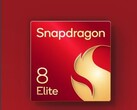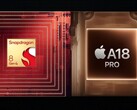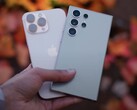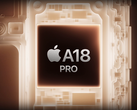Apple's recently launched iPhone 16 and iPhone 16 Pro were met with mixed reviews, deeming the flagship lineup an iterative upgrade at best without Apple Intelligence hitting the scene yet. The flagship lineup is powered by the A18 and A18 Pro SoCs, which pack decent improvements over their predecessors.
However, whether or not those improvements are enough to keep up with the ever-increasing competition in the mobile SoC space, is hard to pin down. Recent benchmarks indicate performance that nearly matches the M1 in CPU tests, despite falling significantly short of the leaked Snapdragon 8 Gen 4 SoC's scores in multi-core benchmarks.
A recent analysis by Geekerwan paints a more positive picture of the A18 and the A18 Pro. Both the CPUs maintain a healthy lead over the Snapdragon 8 Gen 3 in the SPEC 2017 CPU benchmark. For instance, the P-cores of the A18 Pro are almost 42% more powerful than the Cortex-X4 in the 8 Gen 3, while consuming only 8% more power. Meanwhile, the E-cores in the A18 Pro are just a hair faster than the Cortex-A720, while consuming almost 30% less power.
In terms of GPU performance, the A18 Pro shines in 3D Mark's Steel Nomad Light GPU test, handily defeating everything else on the market. Interestingly, while the A18 Pro's GPU is much faster than the A17 Pro's, the jump in efficiency is not as impressive, making the A18 Pro almost as power-hungry as it is faster.
In real-life gaming, however, the A18 Pro performs the best in the iPhone 16 Pro Max, which is to be expected considering the thermal envelope of the larger iPhone is unsurprisingly superior. Apple's improved thermal management has clearly made a difference this time around, allowing for better sustained performance, as well as cooler case temperatures.
Specifically, the A18 Pro in the iPhone 16 Pro Max managed a respectable 55.5 FPS, while the same SoC in the smaller iPhone 16 Pro could manage only 49.5. The iPhone 16 Pro Max outperformed the Dimensity 9300+ in the Vivo X100s by a hair while handily crushing the Snapdragon 8 Gen 3 in the Xiaomi 14 Pro. However, the Redmagic 9S Pro pulled ahead of the entire lot, hitting an impressive 59.9 FPS, while also consuming far more power, with Apple's SoCs taking the lead yet again in efficiency.
Now, of course, CPU and GPU performance of a smartphone depend on a plethora of factors, and are hardly as important as they are on PCs. While synthetic benchmarks may reveal generational improvements, the ultimate usability and quality of a smartphone are hard to determine with lab tests alone. Keeping that in mind, only thorough reviews by experts can reveal the actual experience that the new flagship iPhones will offer.





























